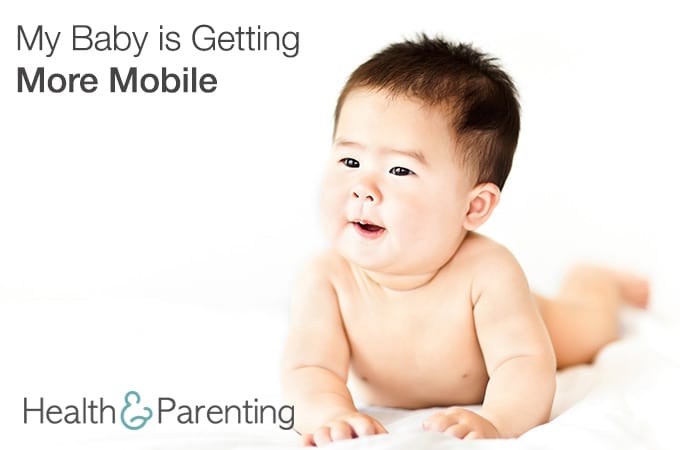Your baby is not a tiny newborn anymore, and she is learning new skills every day. You probably notice she is becoming more mobile and may be well on her way to crawling and standing pretty soon.
When it comes to becoming more mobile, babies don’t all follow the same steps or timetable. For example, although most babies crawl between six and ten months, that timeframe is not written in stone. Also, your baby may bypass crawling on all fours and instead opt for a different style, such as scooting on her tummy.
Your little one may also skip a step and go from sitting to standing without a lot of time spend on crawling. Once your baby learns to stand, he might spend some time cruising. When he gains a little confidence standing, he might hold on to furniture and glide his feet along the floor moving between two pieces of furniture.
Don’t be too alarmed if your baby decides to sit things out for a while. Some little ones are content to take things a bit slower. If your child is not attempting to crawl by about her first birthday, talk with your pediatrician.
To encourage mobility grab one of your baby’s favorite toys and place it just beyond her reach. She may be motivated to get the toy, which might help her get moving. Also, once your baby is crawling well, consider placing pillows on the floor for your baby to crawl around. This mini-obstacle course encourages her to move around the objects, which helps her develop her agility and balance.
As your baby gets increasingly mobile, you have to pay even more attention to baby proofing. Even if he is not yet standing and is only starting to crawl, it’s good to start thinking about these safety issues now. After all, he is only going to get faster.
Although nothing takes the place of a watchful eye, accidents can happen in a second, so keeping his environment safe is essential. Consider placing furniture guards on the corners of tables to prevent her from getting hurt if she bumps into things. Avoid tablecloths for now, since she may reach for it and pull everything on the table down on top of her.
Anchor large furniture to the wall, which prevents it from falling over on top of your baby if she climbs up. Also, blind cords can become wrapped around your baby’s neck, so place them up high.
It may seem like there is a lot to think about. But creating a safe space for your baby allows her the freedom to get moving.
Written by Mary Ann DePietro @writerlady34
This information is not intended to replace the advice of a trained medical doctor. Health & Parenting Ltd disclaims any liability for the decisions you make based on this information, which is provided to you on a general information basis only and not as a substitute for personalized medical advice. All contents copyright © Health & Parenting Ltd 2016. All rights reserved.










